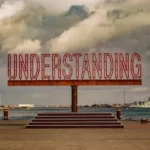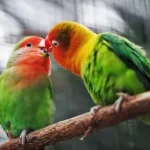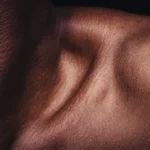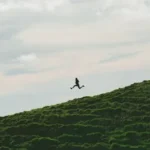- Silhouette dreams offer insight into subconscious thoughts and emotions, revealing hidden desires, fears, and everyday thoughts.
- Dream symbols, such as human figures, animal shapes, and everyday objects, play a significant role in interpreting silhouette dreams.
- Dream interpretation should consider context, emotional connection, color, and light to gain a deeper understanding of the dream’s meaning.
- Silhouette dreams are highly personalized, and interpretations may vary among individuals. Dream analysis requires attention to detail, personal reflection, and an open mind.
Waking up with a sense of curiosity about a dream that seemed to hold a deeper meaning is not uncommon. Silhouette dreams are fascinating and mysterious, offering the potential to reveal our thoughts and emotions. The secrets behind these enigmatic dreamscapes will be explored, providing insights into their meaning and what we can learn from them.
Analyzing Silhouette Dreams

Dream analysis is a fascinating field that offers valuable insights into our subconscious thoughts and emotions. Silhouette dreams, in particular, are intriguing and can provide a deeper understanding of our hidden desires, fears, and everyday thoughts. In this section, we will explore the importance of dream analysis techniques and the role of dream symbols in interpreting silhouette dreams. We will also discuss considerations for interpretation, such as context, emotions, color, and light.
1. The Importance of Dream Analysis Techniques
Dream analysis has long been studied and debated by psychologists, scientists, and those interested in the mysteries of the mind. It offers a window into our subconscious thoughts and can provide valuable insights into our deepest desires and hidden fears. Understanding the meanings behind our dreams can help us navigate our waking lives with more clarity and self-awareness.
When it comes to analyzing silhouette dreams, it is essential to comprehend the tools and techniques used in dream analysis. By examining various dream symbols and understanding their interpretations, we can gain insight into our own subconscious minds. Dream symbols often feature prominently in our dreams, such as silhouettes, and deciphering their meanings can shed light on our emotions and experiences.
2. The Role of Dream Symbols in Silhouette Dreams
Dream symbols play a significant role in silhouette dreams. Silhouettes are a type of dream where the dreamer sees blacked-out shapes or figures filled in with one color, often black. In these dreams, details are typically absent except for the outline, which is usually the only visible part.
Understanding the significance of these symbols requires delving into the context, emotional connection, and personal associations associated with the silhouettes. Each shadow or shape may have a unique interpretation based on these factors.
When interpreting silhouette dreams, it is important to consider various categories of symbols that may appear:
- Human Figures
The appearance of strangers or famous individuals may signify a fear of the unknown or a desire for recognition and success, respectively. Deceased loved ones may represent the need for closure or guidance from beyond. Family members or friends can indicate a need for support or the integration of certain traits. - Animal Shapes
Silhouettes of animals may symbolize various emotions and desires, depending on the specific animal. For example, a black and red snake silhouette could indicate danger or repressed creative energy. Silhouettes of crabs may suggest a fear of vulnerability or a need for protection. Silhouettes of cows might represent a connection to nature or passivity. - Everyday Objects and Items
Silhouettes of everyday objects may have different interpretations based on personal associations and recent events. Keys can symbolize control or access to important aspects of life. Phones may represent communication or important messages. Glasses can signify clarity and attention to detail. Chairs often indicate a need for rest or comfort. Smoking pipes represent reflection or sophistication. - Unrecognizable Silhouettes
Unidentifiable shadows in dreams can be challenging to interpret because they lack clear details. However, they can represent insecurity, confusion, fear of the unknown, or repressed desires and wishes. Paying attention to colors, light, and personal associations can offer insights into their meanings.
3. Considerations for Interpretation: Context, Emotions, Color, and Light
When interpreting silhouette dreams, several factors should be considered to gain a deeper understanding of their meanings. These factors include context, emotional connection, color, and light:
- Context of the Dream
The setting and events leading up to the appearance of the silhouettes can offer valuable insights into their meaning. Recent life changes, challenges, or traumas may manifest in silhouette dreams as shadows representing the unknown or uncertain future. - Emotional Connection
The emotions felt during the dream provide essential clues to interpretation. Fear and anxiety may indicate unresolved fears or uncertainties in waking life, while joy and curiosity could suggest a readiness to explore new possibilities. - Color and Light
The darkness or lightness of the silhouette can influence its meaning. Very dark shadows may represent negativity or danger, while lighter shadows can signify more benign or positive emotions. Additionally, the presence of specific colors within the silhouette can further refine its interpretation. - Personal Associations
Personal associations with the symbols in the dream should be considered to gain a more accurate interpretation. Each individual may have different emotional connections to certain symbols based on their experiences and cultural background.
By taking these considerations into account, dreamers can unravel the hidden meanings behind their silhouette dreams and gain valuable insights into their subconscious thoughts, desires, and fears.
As we explore the interpretation of silhouette dreams, it is important to remember that dream analysis is highly personalized, and interpretations may vary among individuals. Analyzing silhouette dreams requires attention to detail, personal reflection, and an open mind to discover the deeper meanings and messages our subconscious minds are trying to communicate.
Common Types of Shadows and Their Meanings

Dreams can often feature various types of shadows, each carrying their own symbolic meaning. By examining these different shadows, we can gain a deeper understanding of our subconscious thoughts and emotions. In this section, we will explore some common types of shadows and their interpretations in dream analysis.
1. Significance of Human Figure Shadows
When it comes to silhouette dreams, human figure shadows can hold a particular significance. Here are a few possible interpretations:
- Stranger or Unknown Person
The appearance of a shadowy figure representing a stranger or unknown person in your dream may indicate a fear of the unknown or a need to explore new aspects of yourself or your life. - Famous Person or Celebrity
If you dream of a silhouette of a famous person or celebrity, it could denote a desire for recognition or success. It may also signify an aspiration to embody the qualities associated with that person. - Deceased Loved One
The presence of a shadowy figure resembling a deceased loved one in your dream could suggest a need for closure or unresolved feelings of grief. It may also represent a sense of guidance or connection from beyond. - Family Member or Friend
Depending on the relationship and interaction with the shadowy figure in your dream, it may suggest a need for support or advice. Alternatively, it could represent certain qualities or traits of that person that you need to integrate or acknowledge within yourself. - Self-Portrait
The appearance of a silhouette resembling yourself in your dream holds special significance. It may reveal insights into how you view yourself or uncover aspects of your personality that you may not be fully aware of. This dream may also suggest the need for self-reflection and introspection.
Remember that these interpretations may vary based on your own personal experiences and associations with the individuals involved in the dream.
2. Meaning Behind Animal Shape Shadows
Shadows representing animal shapes in dreams can also provide valuable insights into your subconscious state. Here are some possible interpretations for different animal silhouettes:
- Snake
A black and red snake silhouette could indicate a dangerous situation or temptation in your life that you need to avoid. Alternatively, stepping on a snake could symbolize repressed sexuality or creative energy. - Crab
If you see the silhouette of a crab in your dream, it may signify a fear of vulnerability or a need to protect yourself emotionally. However, dreaming of eating crab could symbolize abundance and nourishment. - Cow
A silhouette of a cow could represent your connection to the earth and nature. Alternatively, it might suggest a sense of being too submissive or passive. Use your personal associations to help determine the meaning of the cow shape. - Rabbit
A silhouette of a rabbit could signify fear and vulnerability, or it may represent a sense of playfulness and spontaneity. Consider the context of the dream to help guide your interpretation. - Dragon
A dragon silhouette could represent power and strength, but it might also indicate anger and aggression. Pointy ears in the dragon’s shadow could represent a sense of being guarded or sensitive.
The interpretation of animal silhouettes will depend on the context and your own personal associations with the animal.
3. Interpretation of Shadows as Everyday Objects and Unrecognizable Silhouettes
Silhouettes of everyday objects and unrecognizable shapes hold symbolic meaning in dreams as well. These shadows can be just as revealing as human figures or animal shapes. Here are some common everyday object silhouettes and their interpretations:
- Keys
Dreaming of keys could signify a need for control or access to something important in your life. It might also suggest a desire for freedom or new opportunities. - Phones
Dreaming of phones may symbolize communication and connection. If you hear a ringing phone, it could indicate that an important message or opportunity is trying to reach you. - Glasses
Seeing glasses in your dream may represent clarity or the need for more focus in your waking life. It can also serve as a reminder to pay attention to small details. - Chairs
Dreaming of chairs can indicate a need for rest or relaxation. It may also suggest a longing for comfort or stability. - Smoking Pipe
Dreaming of a smoking pipe may symbolize reflection or contemplation. It can also relate to a desire for sophistication or intellectual stimulation.
In terms of unrecognizable silhouettes, it can be challenging to pinpoint their specific meaning due to the lack of identifiable features. However, consider the context, lighting, and emotions associated with the shadowy figure. Additionally, personal associations and vague memories that come to mind when seeing the unrecognizable silhouette can provide guidance in interpreting its significance.
Common Dream Scenarios and Their Interpretations

Dreams can be a fascinating window into our subconscious minds, offering insights into our deepest desires, fears, and thoughts. Silhouette dreams, in particular, can be intriguing and captivating. In this section, we will explore some common scenarios that occur in silhouette dreams and their potential interpretations.
1. Shadowy Figure Following You
One common scenario in silhouette dreams is the presence of a shadowy figure following you. This figure may evoke feelings of fear, unease, or curiosity. The interpretation of this dream scenario can vary depending on the context and personal associations. Here are some possible interpretations:
- Fear and Anxiety
Dreams about shadowy figures following you can be unsettling and reflect underlying fears or anxieties in your waking life. The figure may represent a threat or danger that you are apprehensive about. - Facing Your Fears
Alternatively, this dream may be an opportunity for you to confront your fears and overcome them. Facing down the shadowy figure in your dream can symbolize your ability to confront challenges in your waking life. - Seeking Guidance
A shadowy figure following you can also symbolize a sense of being lost or directionless. The dream may indicate a need for guidance and direction as you navigate through life’s uncertainties. - Buried Trauma
Dreams of shadowy figures can also be a manifestation of buried trauma or unresolved emotions. The presence of the figure may be a sign that it’s time to address these unresolved issues and find closure.
Remember to consider the emotions you experienced during the dream and any specific details or interactions with the shadowy figure. These factors can provide additional insight into the meaning of your dream.
2. Silhouettes of Loved Ones
Dreaming of silhouettes of loved ones can evoke mixed emotions, ranging from comfort to confusion. Here are some interpretations for this common dream scenario:
- Connection and Comfort
Seeing the silhouette of a loved one in your dream can symbolize a sense of connection and comfort. It may indicate a longing for their presence or a desire for emotional support in your waking life. - Unresolved Feelings
Silhouettes of loved ones in dreams can also be a reflection of unresolved feelings or unfinished business. The dream may be an invitation to address these emotions and seek closure. - Exploring Relationships
Depending on the nature of your relationship with the loved one in the dream, it may suggest a need to examine your feelings or attitudes toward that person. The dream may be highlighting certain aspects or dynamics in your relationship that need attention or resolution.
Consider the specific details and emotions you experienced in the dream to further interpret its meaning. Also, reflect on your relationship with the person in the dream and any current issues or dynamics that may be at play.
3. Unsettling Animal Shapes
Dreaming of unsettling animal shapes in silhouette dreams can evoke a range of emotions, from fear to curiosity. Here are some possible interpretations for this scenario:
- Primal Instincts
Animal shapes in dreams can represent our primal instincts, desires, or fears. The specific animal and its behavior in the dream can provide further insight into the meaning. For example, a predatory animal silhouette might symbolize aggression or assertiveness, while a gentle animal silhouette could represent calmness or vulnerability. - Unexplored Aspects
Animal shapes can also symbolize unexplored or hidden aspects of ourselves. The dream may be an invitation to explore these qualities within ourselves and integrate them into our waking life. - Animal Spirit Guides
In some spiritual beliefs, animal shapes in dreams are believed to be messages from spirit guides or animal totems. Each animal is associated with specific characteristics and qualities that can offer guidance and support.
Consider your personal associations with the specific animals in your dream and any emotions or sensations you experienced during the dream to gain a clearer understanding of the dream’s meaning.
4. Unclear or Unrecognizable Shadows
Dreaming of unclear or unrecognizable shadows can be perplexing and challenging to interpret. These dreams often evoke feelings of uncertainty, confusion, or fear of the unknown. Here are some possible interpretations for this dream scenario:
- Unconscious Desires and Wishes
Unclear shadows in dreams may symbolize repressed desires, wishes, or aspects of ourselves that have not yet revealed themselves. The dream could be an invitation to explore these hidden desires and bring them into awareness. - Insecurity and Confusion
Dreaming of unrecognizable shadows can also represent feelings of insecurity, confusion, or a fear of the unknown. The dream may be highlighting areas in your life where you lack clarity or confidence. - Evolving Self-Identity
Unclear shadows in dreams can also signify a period of personal growth and transformation. It may indicate that you are undergoing changes in your life and are uncertain about your evolving sense of self.
Pay attention to any specific details, emotions, or sensations you experienced during the dream. Also, consider any personal associations or memories that come to mind when thinking about the unclear shadows. These factors can help provide further insight into the dream’s meaning.
Silhouette dreams offer a portal into our subconscious minds, presenting unique scenarios and symbols that reflect our deepest thoughts and emotions. By examining common dream scenarios such as shadowy figures following you, silhouettes of loved ones, unsettling animal shapes, and unclear or unrecognizable shadows, we can gain a deeper understanding of ourselves and navigate through life’s complexities with greater awareness and insight.
Cultural, Psychological and Emotional Perspectives
Dreams have captivated the human imagination for centuries, and cultures around the world have developed their own interpretations and beliefs about the symbolism behind various dream elements. Silhouette dreams, with their eerie black figures and mysterious forms, hold a special place in the realm of dream analysis. In this section, we will explore the cultural, psychological, and emotional perspectives on silhouette dreams, shedding light on their deeper meanings and impact on waking life.
1. Cultural Interpretations and Beliefs About Silhouette Dreams
Different cultures have distinct interpretations and beliefs when it comes to silhouette dreams. These interpretations often draw on cultural traditions, folklore, and spiritual beliefs. Let’s take a closer look at how different cultures view silhouette dreams and their significance.
- Native American
In Native American culture, black silhouettes in dreams are often associated with spirit animals or animal guides. The appearance of specific animal silhouettes in dreams can symbolize a deeper connection to nature or a message from the spiritual realm. - African
In many African cultures, black silhouettes can be seen as a representation of the spirit world or ancestors. These dreams may signify guidance or messages from the beyond. The specific animals or figures that appear as silhouettes can hold cultural significance and may represent specific characteristics or powers. - Eastern
In Eastern cultures such as China and Japan, black silhouettes are often associated with the Yin-Yang philosophy. The black silhouette represents the Yin energy – the feminine principle associated with darkness, mystery, and introspection. These dreams can symbolize a need for balance between opposing forces in one’s life. - Western
In Western culture, black silhouettes may be associated with mystery, fear, or unknown aspects of the self. These dreams often evoke feelings of unease or discomfort due to the lack of clear identity or detail. They may represent the unconscious mind or suppressed emotions that need to be explored.
2. Psychological Implications of Silhouette Dreams
From a psychological perspective, silhouette dreams can provide insight into the workings of the subconscious mind and the unresolved aspects of one’s personality. Here are a few psychological implications to consider when analyzing silhouette dreams:
- Shadow Self
Silhouette dreams often reflect the presence of the shadow self, a concept introduced by psychologist Carl Jung. The shadow self represents the repressed or unconscious aspects of the personality. Dreaming of black silhouettes may signify a need to integrate and address these hidden aspects for personal growth and wholeness. - Unresolved Emotions
Silhouette dreams can also be an indication of unresolved emotions or unexpressed desires. The lack of detail in the silhouettes may represent emotions that have been suppressed or ignored. These dreams serve as a reminder to explore and process these emotions in order to achieve emotional well-being. - Exploration and Self-Discovery
Silhouette dreams can be an invitation to explore uncharted territories within oneself. The mysterious nature of these dreams encourages introspection and self-reflection. They may signify a quest for self-discovery and a need to shed light on hidden aspects of one’s personality. - Fear and Vulnerability
Dreams featuring black silhouettes can evoke feelings of fear and vulnerability. These dreams may reveal underlying anxieties or fears that need to be addressed. Exploring the source of these fears can lead to personal growth and increased resilience.
3. Emotional Analysis and Impact on Waking Life
Silhouette dreams can have a profound emotional impact on individuals, carrying over into their waking life. Here are a few emotional perspectives to consider when analyzing these dreams:
- Intrigue and Curiosity
Silhouette dreams often evoke a sense of intrigue and curiosity due to their mysterious nature. Dreamers may feel compelled to explore and understand the hidden aspects symbolized by the silhouettes. This emotional response can drive personal growth and self-discovery. - Unease and Apprehension
Silhouette dreams can also evoke feelings of unease and apprehension. The lack of detail and clear identity may create a sense of uncertainty or fear. These emotions can reflect the dreamer’s hesitance to confront hidden aspects of themselves or their lives. - Hope and Transformation
Silhouette dreams can also inspire hope and a desire for transformation. The presence of black silhouettes may signify a need for change or personal growth. Dreamers may feel a sense of excitement or anticipation at the prospect of exploring new paths in their lives. - Liberty and Acceptance
Silhouette dreams may provide a catalyst for self-acceptance and a newfound sense of freedom. By acknowledging and integrating hidden aspects, dreamers can experience liberation from self-imposed limitations. This emotional shift can result in increased self-confidence and authenticity in waking life.
Silhouette dreams can have a profound emotional impact, eliciting a range of responses from intrigue and curiosity to unease and apprehension. The emotional lens through which an individual interprets these dreams often informs their approach to personal growth and self-discovery.
Conclusion: The Value of Interpreting Silhouette Dreams
Remember that our subconscious mind is always at work, and our dreams are a reflection of this mysterious aspect of ourselves. Silhouette dreams can be particularly powerful in revealing our innermost desires, fears, and thoughts, but understanding these dreams requires a thoughtful and personalized approach. By paying attention to dream symbols, context, emotional connections, and other factors, we can unravel the hidden meanings of our dreams and gain a deeper understanding of ourselves. It’s essential to approach the dream interpretation process with an open mind and a willingness to explore the often-mysterious workings of our subconscious. Whether you’re seeking personal growth or simply curious about your dreams, learning to interpret silhouette dreams can be a fascinating and enlightening journey.










Leave a Reply